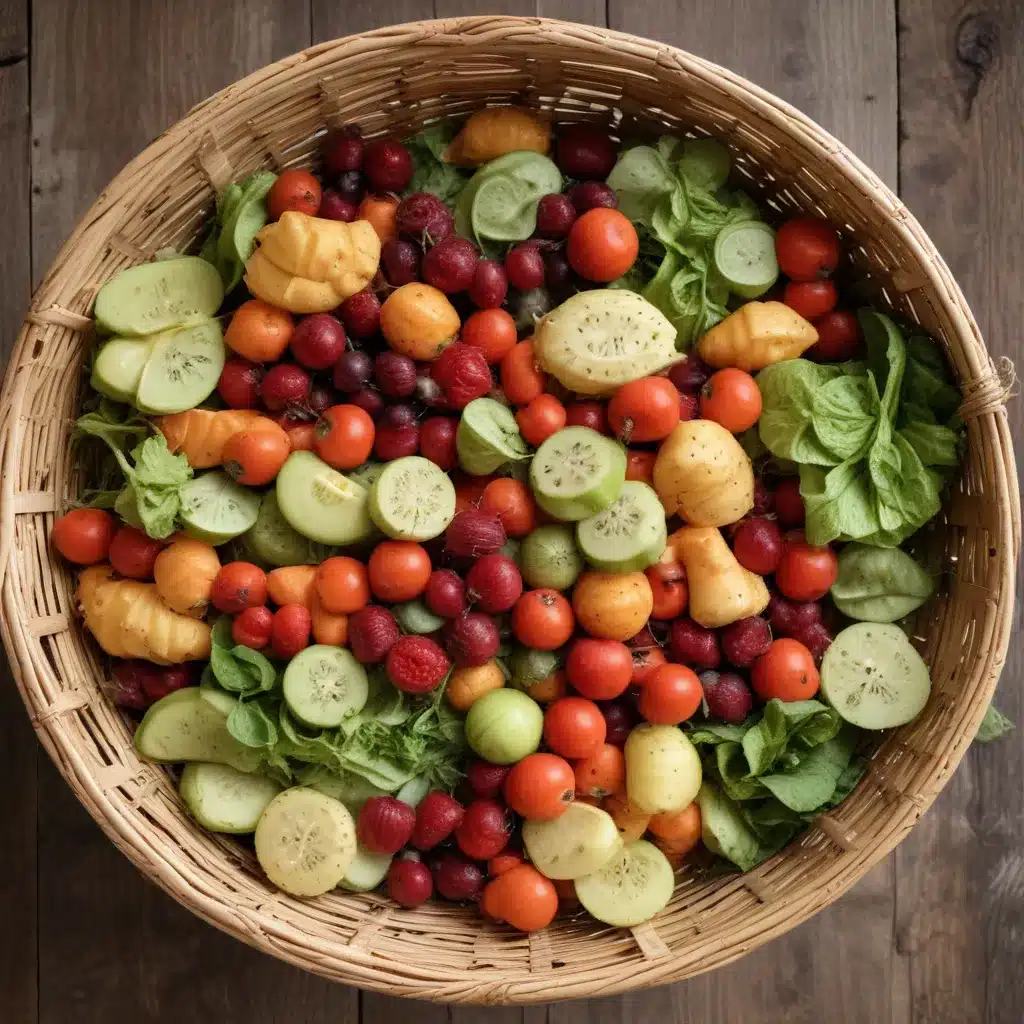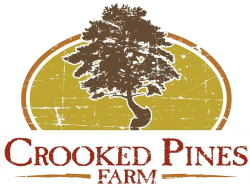
Here is a 2,500-word article titled “Bountiful Baskets: Preserving the Harvest through Dehydration and Drying”:
As the days grow shorter and the summer sun begins to wane, the bounty of Crooked Pines Farm swells with ripe, juicy produce ready for preservation. Dehydration and drying offer fantastic methods to capture the flavors of the season and enjoy them well into the colder months. Whether you’ve grown a veritable cornucopia in your own garden or have access to the farm’s abundant harvests, these simple techniques can transform your seasonal bounty into shelf-stable delights.
Dehydration Methods
At Crooked Pines Farm, we rely on a few key dehydration methods to dry our produce. Air drying, oven drying, and electric dehydrators all have their advantages, so it’s worth exploring which approach might work best for your needs and setup.
Air Drying
The most traditional and low-tech approach is simple air drying. This method relies on the sun’s warmth and air circulation to gradually remove moisture from produce over several days. While slightly more time-consuming, air drying requires minimal equipment and can be a fun, hands-on activity for the whole family.
To air dry, simply wash and slice your produce into thin, even pieces. Arrange the slices on mesh screens, cheesecloth, or even paper towels, ensuring good air flow on all sides. Position your drying setup in a warm, dry, well-ventilated area out of direct sunlight. Rotate the pieces occasionally, and monitor closely to prevent spoilage. Depending on the thickness and moisture content, most produce will fully dehydrate within 2-4 days.
Oven Drying
For a speedier option, try oven drying. This method uses your home oven’s heat to remove moisture, often in just a few hours. Preheat your oven to the lowest possible temperature, typically around 135°F. Prepare your produce as with air drying, then arrange the slices in a single layer on baking sheets or racks. Check regularly, flipping the pieces as needed, until they reach the desired level of dryness, usually 4-8 hours.
The key with oven drying is to maintain a low, consistent temperature. Anything over 145°F risks scorching or cooking the produce rather than dehydrating it. Be vigilant about monitoring your items and resist the urge to crank up the heat. Patience will yield the best, most flavorful results.
Electric Dehydrators
For the most efficient and controlled dehydration, an electric dehydrator is hard to beat. These specialized appliances use circulating warm air to gently remove moisture over an extended period, often 8-12 hours. Dehydrators come in a range of sizes and models, allowing you to tailor the capacity to your household’s needs.
The beauty of a dehydrator is its ability to maintain an ideal temperature (typically 135-155°F) and air flow, ensuring even and thorough drying without risk of scorching. Simply load up the trays, set the timer, and let the machine do the work. Many modern dehydrators even feature digital controls and multiple temperature settings to optimize the process.
Drying Procedures
Regardless of your chosen dehydration method, there are a few universal best practices to ensure delicious, shelf-stable results.
Pre-treatment Considerations
Some foods, like tomatoes and peppers, may benefit from a brief pre-treatment before drying. Blanching, steaming, or even a salt or lemon juice dip can help preserve color, texture, and flavor. Experiment to find what works best for your particular produce.
Temperature and Humidity Control
Maintaining the right temperature and humidity levels is crucial for successful dehydration. Aim for a warm, dry environment, whether that’s the sun’s rays, your oven’s gentle heat, or a dehydrator’s regulated air circulation. High humidity or cool temperatures can prolong the drying process and promote mold growth.
Storage of Dried Produce
Once fully dehydrated, your dried fruits, vegetables, and herbs require proper storage to maximize their shelf life. Transfer the crisp, leathery pieces to airtight containers, jars, or sealable plastic bags. Exclude as much air as possible to prevent reabsorption of moisture. Store your dried goods in a cool, dark place for up to a year.
Nutritional Benefits of Dried Foods
Beyond the convenience and versatility of dried produce, this preservation method also offers impressive nutritional benefits. When done right, dehydration can actually enhance the nutrient retention, fiber content, and antioxidant profile of many foods.
Nutrient Retention
Contrary to common belief, drying often maintains more of a food’s original nutritional value compared to other preservation methods like canning or freezing. The gentle heat and lack of water exposure help lock in vitamins, minerals, and other beneficial compounds. In fact, dried fruits and vegetables can sometimes contain higher concentrations of certain nutrients than their fresh counterparts.
Fiber and Antioxidant Content
Dehydration also concentrates the fiber and antioxidant levels in many foods. As moisture is removed, the relative proportion of these important compounds increases. This makes dried produce an excellent choice for boosting your dietary fiber intake and supporting overall health.
Shelf-life Extension
One of the primary perks of drying is the dramatic extension of shelf life it provides. Properly dried and stored items can maintain their quality for 6 months to a year or more, far surpassing the lifespan of fresh produce. This allows you to savor the flavors of summer well into the colder seasons.
Preparing Dried Ingredients
Once you’ve mastered the art of dehydration, the fun part begins: incorporating your dried produce into a variety of delectable dishes. From snacks to main courses, dried fruits, veggies, and herbs can lend incredible depth of flavor and nutrition.
Rehydration Techniques
Many dried foods can be easily rehydrated by soaking in water or broth prior to use. This step plumps up the shrunken pieces and restores their original texture and moisture content. The liquid used for rehydrating can also pick up the concentrated flavors of the dried ingredients, creating a nutritious base for soups, sauces, and more.
Incorporating into Recipes
Dried produce shines in all sorts of recipes, from breakfast to dessert. Toss sun-dried tomatoes into scrambles, frittatas, or omelets. Sprinkle dehydrated herbs like basil, oregano, or thyme over pizza, pasta, or roasted vegetables. For a sweet treat, dried apple slices or fruit leathers make a wholesome, portable snack.
Flavor Profiles of Dried Produce
Each type of dried fruit, veggie, or herb offers its own unique flavor profile that can transform a dish. Tomatoes, for instance, become intensely sweet and savory when dried, while peppers develop a concentrated heat and earthiness. Herbs maintain their fresh, aromatic qualities, often with an even more pronounced essence. Experimenting with different dried ingredients is half the fun!
Food Safety Considerations
While drying is an excellent preservation method, it’s crucial to follow food safety guidelines to ensure the long-term quality and edibility of your dried goods. Improper handling or storage can allow the growth of harmful microbes.
Preventing Microbial Growth
Thoroughly drying your produce to the recommended moisture content is essential for inhibiting mold, yeast, and bacteria. Careful temperature monitoring and air circulation are key. Additionally, be diligent about washing hands, sanitizing equipment, and avoiding cross-contamination during the drying and packaging process.
Proper Packaging and Storage
Once dried, your produce requires airtight storage to prevent reabsorption of moisture. Glass jars, rigid plastic containers, or heavy-duty sealable bags work well. Exclude as much air as possible, and consider using oxygen absorbers for an extra safeguard. Store your dried goods in a cool, dark place for optimal shelf life.
Regulatory Guidelines
When it comes to food safety, it’s also important to familiarize yourself with any relevant regulatory guidelines in your area. Many states and municipalities have specific requirements for home food preservation, particularly if you plan to sell your dried goods. Consulting local resources can help ensure you’re meeting all necessary standards.
The bountiful harvests of Crooked Pines Farm provide a wonderful opportunity to explore the world of dehydration and drying. By mastering these preservation techniques, you can savor the flavors of the season for months to come, all while reaping impressive nutritional benefits. Whether you’re air drying your own homegrown produce or utilizing the farm’s abundant offerings, the options for dried delights are endless. So gather your baskets, roll up your sleeves, and let the preserving begin!


